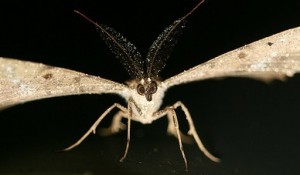Big problems for astronomers: the just-launched zillion-dollar Hubble Space Telescope couldn’t be focused; a Mars probe got to Mars and then lost contact with the earth; the 300-foot Green Bank radio telescope collapsed one night into lacy rubble. Smaller problems are below.
An amateur astronomer, after observing on his back porch one night, locked his 14.5 inch Starmaster Dobsonian at the horizontal position, put a towel over the eyepiece, and called it a night. The next morning, the wind first blew the towel off, then blew the telescope out of gear so it bobbed up into a vertical position and looked at the sky. As the morning passed, the sun hit the mirror, the mirror focused the sunlight, the eyepiece caught fire, the telescope exploded into flame, the whole back porch caught fire. The amateur wasn’t entirely dismayed: he was insured and besides, it was only the 14.5 inch Starmaster that exploded, not the 20-inch.
And this heartbreaker, in an astronomer’s own words, from N. Bartel, et al., 1987, ApJ 323. 507, who was attempting to observe a starburst galaxy: “No data were taken at station D during the period 0830 to 1630 GST due to the presence of a red racer snake (Coluber constrictor) draped across the high-tension wires (33,000 V) serving the station. However, even though this snake, or rather a three-foot section of its remains, was caught in the act of causing an arc between the transmission lines, we do not consider it responsible for the loss of data. Rather we blame the incompetence of a red-tailed hawk (Buteo borealis) who had apparently built a defective nest that fell off the top of the nearby transmission tower, casting her nestlings to the ground, along with their entire food reserve consisting of a pack rat, a kangaroo rat, and several snakes, with the exception of the above-mentioned snake who had a somewhat higher destiny. “

To end, a problem that got fixed: every year in the southwest, miller moths migrate to the mountains; mountains in the southwest are also where big telescopes are. So every year, the moths creep into the insides of telescope drives and when the telescope moves, it mashes the moths into the drive surfaces and the telescope loses track of where it is and all hell breaks loose. One observatory commissioned a scientifically-minded college intern to design a moth ejector system. The intern noticed if he jangled keys, the moths seemed agitated; so he aimed a speaker at some moths and broadcast sounds in a wide range of frequencies. At 0.4 kilohertz, the moths startled but settled back down; at 0.6 kilohertz, one moth moved briefly; at all other frequencies, the moths remained unconcerned. Then, noting that moths don’t like wind, he proposed what he called a conceptual deterrent system involving an air gun, small rubber tubing, a valve, and an electric timer. He built the system and blew jets of air at the moths; they tended to hunker down and wait until the jet was over; they could handle upwards of 80 pounds per square inch. Nevertheless, he installed the deterrent system on the telescope and while it was working, no moths were mashed — implying, he thought, some degree of success. Eventually the observatory found that moths hated interrupted air and built a 2 Hertz puffer system. The moth problem didn’t completely resolve, but it was much improved.
Credits:
NB: The section on the miller moths I plagiarized from my own book, The Grand and Bold Thing.
Hubble Space Telescope in & out of focus: NASA
not a red racer snake: kibuyu
not a miller moth: Arthur Chapman


One thought on “Small Problems for Astronomers”
Comments are closed.